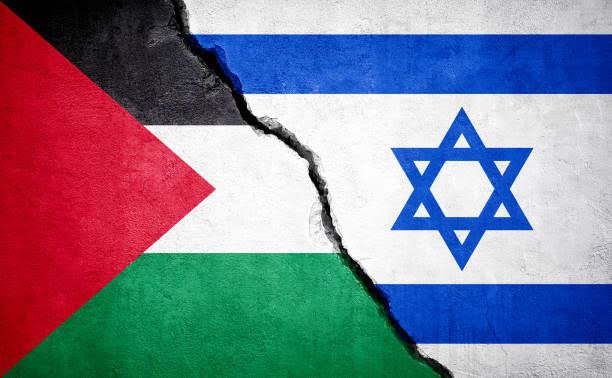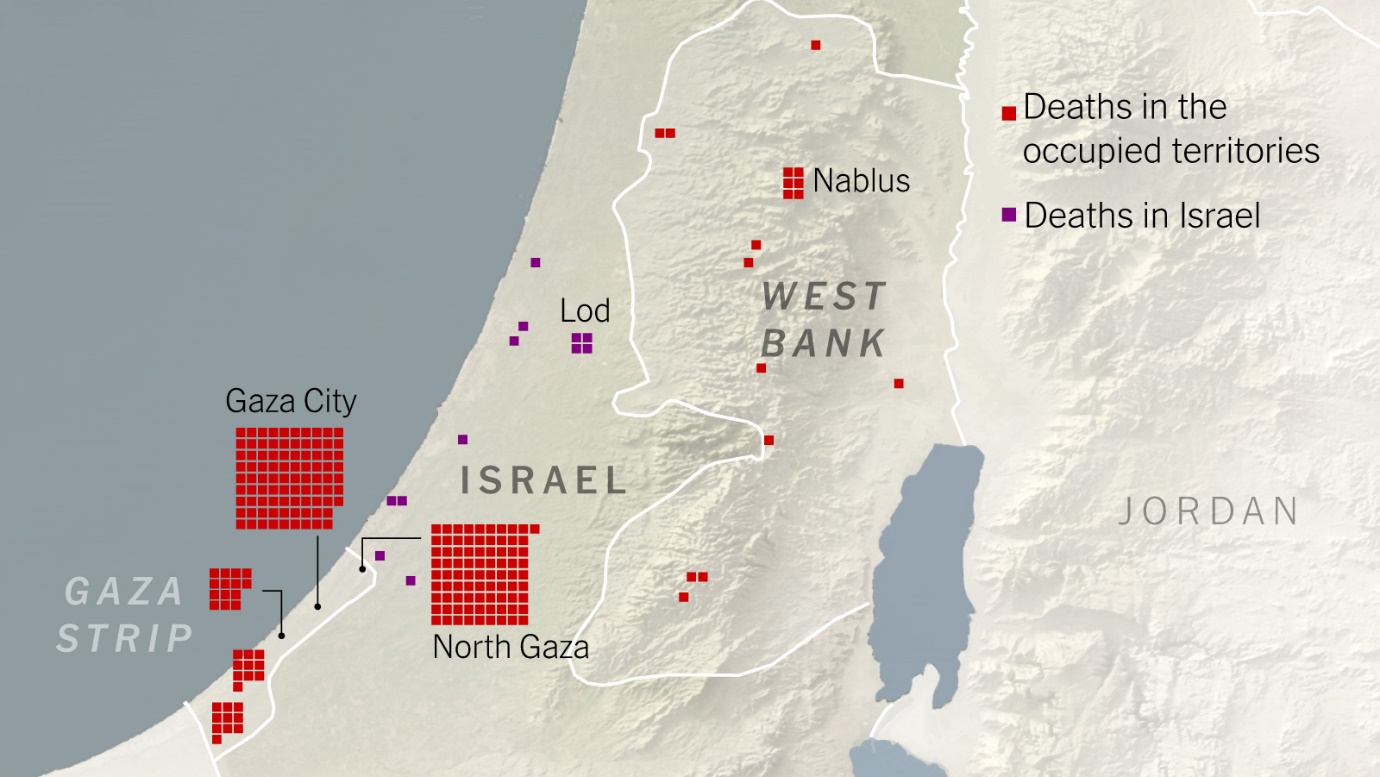Hamas is an Islamist militant movement and one of the Palestinian territories’ two major political parties. It governs more than two million Palestinians in the Gaza Strip, but the group is best known for its armed resistance to Israel.
Dozens of countries have designated Hamas a terrorist organization, though some apply this label only to its military wing. Iran provides it with material and financial support, and Turkey reportedly harbors some of its top leaders.
Its rival party, Fatah, which dominates the Palestine Liberation Organization (PLO) and rules in the West Bank, has renounced violence. The split in Palestinian leadership and Hamas’s unwavering hostility toward Israel have diminished prospects for stability in Gaza.

What are the group’s origins?
Hamas, an acronym for Harakat al-Muqawama al-Islamiya (“Islamic Resistance Movement”), was founded by Sheikh Ahmed Yassin, a Palestinian cleric who became an activist in local branches of the Muslim Brotherhood after dedicating his early life to Islamic scholarship in Cairo. Beginning in the late 1960s, Yassin preached and performed charitable work in the West Bank and Gaza, both of which Israel occupied following the 1967 Six-Day War.
Yassin established Hamas as the Brotherhood’s political arm in Gaza in Dec. 1987, following the outbreak of the first intifada, a Palestinian uprising against Israeli occupation of the West Bank, Gaza, and East Jerusalem.
At the time, Hamas’s purpose was to counter Palestinian Islamic Jihad (PIJ), another organization whose commitment to violently resisting Israel threatened to draw Palestinians’ support away from the Brotherhood.
In 1988, Hamas published its charter, calling for the destruction of Israel and the establishment of an Islamic society in historic Palestine. In what observers called an attempt to moderate its image, Hamas presented a new document [PDF] in 2017 that accepted an interim Palestinian state along the “Green Line” border established before the Six-Day War but that still refused to recognize Israel.
Hamas first employed suicide bombing in April 1993, five months before PLO leader Yasser Arafat and Israeli Prime Minister Yitzhak Rabin signed the Oslo Accords. The historic pact established limited self-government for parts of the West Bank and Gaza under a newly created entity called the Palestinian Authority (PA). Hamas condemned the accords, as well as the PLO’s and Israel’s recognition of each other, which Arafat and Rabin officially agreed to in letters sent days before Oslo.
In 1997, the United States designated Hamas a foreign terrorist organization. The movement went on to spearhead violent resistance during the second intifada, in the early 2000s, though PIJ and Fatah’s Tanzim militia were also responsible for violence against Israelis.
Who are its leaders?
Hamas has a host of leadership bodies that perform various political, military, and social functions. General policy is set by an overarching consultative body, often called the politburo, which operates in exile. Local committees manage grassroots issues in Gaza and the West Bank.
Ismail Haniyeh currently serves as political chief, having replaced longtime leader Khaled Meshaal in 2017. Haniyeh has operated from Doha, Qatar, since 2020, reportedly because Egypt restricts his movement into and out of Gaza.
Hamas leaders established a presence in Qatar after falling out with their previous host, Syria, when Palestinian refugees participated in the 2011 uprising that preceded the Syrian Civil War. Some senior Hamas figures reportedly operate out of the group’s offices in Turkey.
Day-to-day affairs in Gaza are overseen by Yahya Sinwar, who previously headed Hamas’s military wing and served twenty-two years in an Israeli prison for masterminding the abduction and killing of two Israeli soldiers. He was among the more than one thousand Palestinian prisoners freed in 2011 in exchange for an Israeli soldier held by Hamas. As of June 2021, Gaza’s de facto prime minister is Issam al-Da’alis.
Marwan Issa and Mohammed Deif command Hamas’s military wing, the Izz ad-Din al-Qassam Brigades. Israeli forces assassinated the militia’s founder, Salah Shehadeh, in a 2002 air strike. Fifteen civilians were killed in the attack, focusing Israeli and international scrutiny on such tactics. Israelis forces killed Yassin, Hamas’s founder, in 2004.
Saleh al-Arouri reportedly heads Hamas’s Lebanon branch. He also took over the group’s West Bank leadership following internal elections that concluded in 2021, while Meshaal was chosen to lead the diaspora office and Salameh Katawi was elected to manage the affairs of imprisoned Hamas members.
How is Hamas funded?
As a designated terrorist entity, Hamas is cut off from official assistance that the United States and European Union (EU) provide to the PLO in the West Bank. Historically, Palestinian expatriates and private donors in the Persian Gulf provided much of the movement’s funding. In addition, some Islamic charities in the West have channeled money to Hamas-backed social service groups, prompting asset freezes by the U.S. Treasury.
Gaza’s economic situation was already dire before Hamas’s 2023 assault on Israel, and the ensuing war is almost certain to exacerbate the extreme poverty of its residents. Egypt and Israel largely closed their borders with it in 2006–07, restricting the movement of goods and people into and out of the territory.
The two countries maintain a blockade today, cutting off the territory from most of the world and forcing more than one million Gazan Palestinians to rely on international aid. Israel has allowed Qatar to provide hundreds of millions of dollars in assistance through Hamas. Other foreign aid generally reaches Gaza via the PA and UN agencies.
For years after the blockade began, Hamas collected revenue by taxing goods moving through a sophisticated network of tunnels that circumvented the Egyptian crossing into Gaza; this brought staples such as food, medicine, and cheap gas for electricity production into the territory, as well as construction materials, cash, and arms.
After Egyptian President Abdel Fatah al-Sisi took power in 2013, Cairo became hostile toward Hamas, which it saw as an extension of its chief domestic rival, the Muslim Brotherhood.
The Egyptian army shut down most of the tunnels breaching its territory while it waged a counterterrorism campaign against a branch of the self-proclaimed Islamic State on its side of the border, on the Sinai Peninsula. Egypt began to allow some commercial goods to enter Gaza through its Salah al-Din border crossing in 2018. As of 2021, Hamas reportedly collected upward of $12 million per month from taxes on Egyptian goods imported into Gaza.
Today, Iran is one of Hamas’s biggest benefactors, contributing funds, weapons, and training. Though Iran and Hamas briefly fell out after backing opposing sides in Syria’s civil war, Iran currently provides some $100 million annually [PDF] to Hamas, PIJ, and other Palestinian groups designated as terrorist organizations by the United States. Iran was quick to praise Hamas’s assault on Israel in late 2023 and pledge its continuing support for the Palestinian group.
Turkey has been another stalwart backer of Hamas—and a critic of Israel—following President Recep Tayyip Erdogan’s rise to power in 2002. Though Ankara insists it only supports Hamas politically, it has been accused of funding Hamas’s terrorism, including through aid diverted from the Turkish Cooperation and Coordination Agency.
How does it govern Gaza?
Hamas has been the de facto authority in Gaza since shortly after Israel withdrew from the territory in 2005. The following year, Hamas won a majority of seats in the PA’s legislature and formed a government.
It earned votes for the social services it provided and as a rejection of the incumbent Fatah, which many voters perceived as having grown corrupt at the helm of the PLO and delivering little to Palestinians through its negotiations with Israel.
The outcome was unacceptable to Fatah and its Western backers, and the party ousted Hamas from power in the West Bank. In Gaza, Hamas routed Fatah’s militias in a week of fighting, resulting in a political schism between the two Palestinian territories. Palestinians have not voted for a legislature since 2006, nor a president since 2008.
As Hamas took over the remnants of PA institutions in the strip, it established a judiciary and put in place authoritarian institutions. In theory, Hamas governs in accordance with the sharia-based Palestinian Basic Law, as does the PA; but it has generally been more restrictive than the law requires, including by controlling how women dress and enforcing gender segregation in public during the early years of its rule.
The watchdog group Freedom House found in 2020 that the “Hamas-controlled government has no effective or independent mechanisms for ensuring transparency in its funding, procurements, or operations.” Hamas also represses the Gazan media, civilian activism on social media, the political opposition, and nongovernmental organizations (NGOs), leaving it without mechanisms for accountability.
How do Palestinians view Hamas?
The political bifurcation of the West Bank and Gaza is widely unpopular: a June 2023 poll [PDF] by the Palestinian Center for Policy and Survey Research (PCPSR) showed that one-third of Palestinians consider it the most damaging development for their people since the state of Israel’s 1948 creation.
The same poll found that more than half of Palestinians in Gaza and the West Bank would vote for Hamas’s Haniyeh over PA President Mahmoud Abbas in a presidential election, while just one-third of Palestinians would choose Abbas.
Additionally, Abbas has indefinitely postponed national elections scheduled for 2021, citing Israel’s alleged refusal to let Palestinians in East Jerusalem vote, though observers suspect that Abbas aims to prevent a likely Hamas victory.
As Hamas took over the remnants of PA institutions in the strip, it established a judiciary and put in place authoritarian institutions. In theory, Hamas governs in accordance with the sharia-based Palestinian Basic Law, as does the PA; but it has generally been more restrictive than the law requires, including by controlling how women dress and enforcing gender segregation in public during the early years of its rule.
The watchdog group Freedom House found in 2020 that the “Hamas-controlled government has no effective or independent mechanisms for ensuring transparency in its funding, procurements, or operations.” Hamas also represses the Gazan media, civilian activism on social media, the political opposition, and nongovernmental organizations (NGOs), leaving it without mechanisms for accountability.
How is Hamas’s attack on Israel in 2023 different?
Hamas’s assault on southern Israel this year, which the group’s leaders have called “Operation Al-Aqsa Storm,” was extraordinary in its strategy, scale, and secrecy, analysts say. It began early in the morning on Oct. 7, the Jewish Sabbath and an important Jewish holiday, with Hamas launching several thousand rockets into southern and central Israel, hitting cities as far north as Tel Aviv.
Hamas militants also breached the heavily fortified Gaza border and infiltrated many southern Israeli towns and villages, killing hundreds of Israeli troops and civilians, and wounding and kidnapping scores more.
Hamas’s military leader, Mohammed Deif, said the group undertook its assault because of Israel’s long-running blockade of Gaza, its occupation of Palestinian lands, and its alleged crimes against Muslims, including the desecration of Al-Aqsa Mosque in Jerusalem.
“It is completely unprecedented that a terrorist organization would have the capacity or the wherewithal to mount coordinated, simultaneous assaults from the air, sea, and land,” writes CFR Senior Fellow Bruce Hoffman.
Israel has declared war on Hamas and countered with intensifying air strikes on targets in Gaza and ground operations to push the group’s militants out of the country. The government has ordered the evacuation of all civilians from Israeli communities bordering Gaza.
Prime Minister Benjamin Netanyahu has warned of a “long and difficult war” against Hamas, and Israel’s military response is expected to be extraordinary, if not unprecedented.
Some observers are questioning if Israel will attempt a full-scale invasion and reoccupation of the Palestinian territory, a campaign that could incur heavy casualties on both sides.
“Israel had mounted numerous military operations against Hamas since its takeover in 2007, two years after Israel pulled out of Gaza. But these were mostly from the air. And even when Israeli troops were deployed, they never stayed for long,” writes CFR Senior Fellow Max Boot for the Washington Post.
An Israeli invasion of Gaza could also provoke a significant attack against Israel by Hezbollah, the Iran-backed militant group in Lebanon, risking a wider conflagration in the region, analysts say.
“Iran is, of course, a patron of Hezbollah [as well as Hamas and other Palestinian militant groups] and there is an ever-present danger of a two-front conflict, which would devastate parts of Israel and much of Lebanon, where Hezbollah is based. There is a risk of escalation,” says CFR Senior Fellow Steven A. Cook.
Editor’s Note
The ongoing Israel-Hamas war has been a topic of concern for many countries. India has expressed its support for a two-state solution for Israel and Palestine, and has called for direct negotiations towards establishing a “sovereign, independent, and viable” State of Palestine living side-by-side at peace with Israel.India has also described Hamas’ strikes on Israeli cities as “terror attacks” and advocated for the observance of international humanitarian law.


